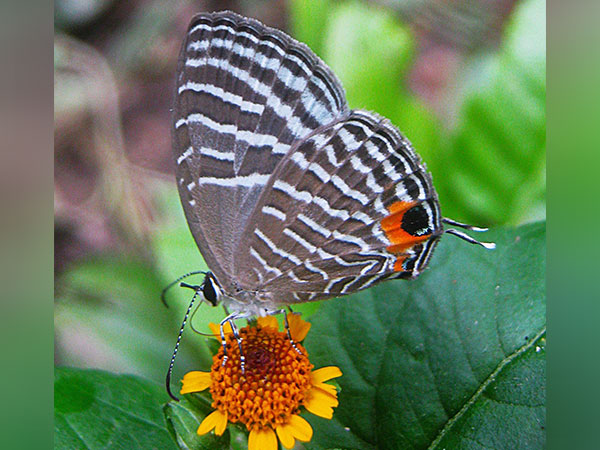In an exciting development for biodiversity conservation, Kaziranga National Park, located in Assam, has been recognized as India’s second butterfly diversity hub. Known globally for its iconic population of one-horned rhinoceroses, the park is now being celebrated for its rich butterfly diversity, showcasing its ecological significance beyond large mammals. This recognition not only adds another dimension to Kaziranga’s global importance but also highlights Assam’s role in conserving India’s rich flora and fauna.
Kaziranga becomes the second such hub in India after Arunachal Pradesh’s Namdapha National Park, which holds the distinction as the first. This latest milestone strengthens the national park’s status as a biodiversity hotspot.
Butterfly Diversity at Kaziranga National Park
Kaziranga’s lush landscape, comprising tall grasslands, forests, and wetlands, provides a conducive habitat for butterflies. According to recent surveys conducted by entomologists and wildlife researchers, the park hosts over 300 butterfly species, including rare and endangered varieties. This diversity underscores the role of Kaziranga’s varied ecosystems in nurturing pollinators and other smaller fauna that are crucial to maintaining ecological balance.
The presence of species such as the Blue Tiger, Common Crow, Peacock Pansy, and Crimson Rose reflects Kaziranga’s significance as a vital butterfly corridor in the Northeast.
Importance of Butterflies in Kaziranga’s Ecosystem
Butterflies play a crucial role in ecosystems by acting as pollinators, supporting plant growth and biodiversity. They also serve as bioindicators, reflecting the health of an ecosystem. Their presence in large numbers within Kaziranga suggests a thriving ecosystem capable of supporting a variety of life forms.
The park’s recognition as a butterfly hub brings new attention to the need for pollinator conservation, an issue of global importance in the face of climate change and habitat destruction.
Kaziranga: A Haven for Biodiversity
Kaziranga National Park is already a UNESCO World Heritage Site, known for its efforts in conserving the endangered one-horned rhinoceros. It is home to a variety of wildlife, including elephants, tigers, swamp deer, and wild buffaloes. With the recent recognition of its butterfly diversity, Kaziranga emerges not only as a center for mammal conservation but also as an essential hub for insect biodiversity.
This discovery also aligns with Assam’s larger conservation initiatives, such as those focusing on the Brahmaputra River ecosystem and wetland preservation projects to protect migratory birds.
Community Involvement and Ecotourism
The identification of Kaziranga as a butterfly diversity hub offers new opportunities for ecotourism and community engagement. Butterfly tourism can complement the park’s wildlife safaris, encouraging tourists to explore lesser-known aspects of Kaziranga’s biodiversity.
Additionally, local communities living around the park can benefit from new eco-friendly income opportunities by organizing butterfly walks, workshops, and awareness programs. Engaging communities in conservation activities fosters a sense of ownership, ensuring sustainable conservation efforts in the region.
Challenges and Conservation Efforts
While the discovery of Kaziranga’s butterfly diversity is promising, it also highlights the need for focused conservation efforts. Some challenges include:
- Habitat Loss: Rapid urbanization and agricultural activities around the park threaten butterfly habitats.
- Climate Change: Temperature shifts can affect the lifecycle and migration patterns of butterflies.
- Pesticide Use: The use of chemical pesticides in surrounding agricultural areas poses a serious risk to pollinators.
To address these challenges, park authorities and researchers are working on habitat restoration projects and awareness campaigns. The park also plans to collaborate with NGOs and educational institutions to promote the study and conservation of butterflies.
The recognition of Kaziranga as a butterfly diversity hub opens up new avenues for research and conservation. Conservationists aim to document the butterfly species found in the park systematically, contributing to India’s national butterfly census.
There are also plans to develop butterfly gardens and breeding programs within the park premises to attract tourists and educate visitors about the importance of insect biodiversity. These efforts align with India’s larger goal of achieving biodiversity conservation under the United Nations Sustainable Development Goals (SDGs).
Recognition Beyond Borders
Kaziranga’s butterfly diversity is likely to attract global attention from entomologists, ecologists, and conservationists. International collaborations and funding opportunities can further bolster the park’s conservation efforts. This newfound recognition places Kaziranga not just as a center for wildlife tourism but also as an emerging hub for scientific research.
The emergence of Kaziranga National Park as India’s second butterfly diversity hub is a major achievement for biodiversity conservation in the Northeast. Beyond its fame as the home of the one-horned rhinoceros, Kaziranga’s butterfly population highlights the park’s ecological richness.
With the right conservation strategies, community involvement, and eco-tourism initiatives, Kaziranga can set an example for integrated wildlife conservation. This recognition reinforces the importance of protecting pollinators and maintaining ecological balance, ensuring that Kaziranga remains a haven for all forms of life—big and small.




